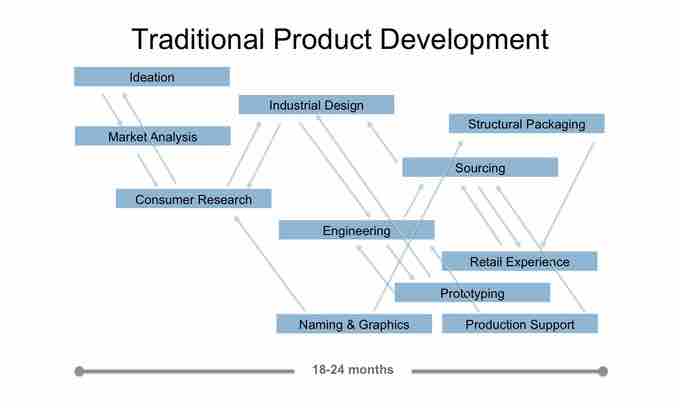Identifying your customer begins with formulating a value proposition. You have to be able to answer this question: "To whom is this proposition of value? " When trying to answer this question, it helps to simplify matters by breaking the market down into components. The role of the marketing team is to understand everything there is to know about given target groups, ensuring that needs are being identified and filled.
There are three broad categories of customers who could buy your product: individuals, channels (intermediaries), and organizations. Each of these categories can be further broken down into smaller segments. This is called market segmentation - picking out the particular groups of people or organizations that benefit from your product, so you can better sell to them. Organizations can be segmented by:
- Industry
- Size
- Function
- Level
- Type of individuals within the organization
Many segmentation schemes are combinations of the above list. For example, let's say a venture developing an innovative digital storage product decides to sell only to organizations, not individuals. It segments its potential market by size of organization, size of data storage requirements, and need for speed of retrieval. This would occur during the periods of market analysis and customer research in the product development cycle . That leads, for example, to a focus on large financial institutions and large medical centers. Within those targeted organizations, the importance and cost of the purchase dictates that the venture focuses on selling only to "C-level" executives, such as the CIO or CFO. Finally, as the technology is very new, the venture team chooses to target the executives who are technology enthusiasts—people who love new technology for its own sake and are often willing to look at it in its preliminary form.

Product Innovation Approach
In the product development cycle, the market analysis and consumer research phases are used to identify customers.
Industry classifications can assist in determining market segmentation. The North American Industry Classification System (NAICS) is used by business and government to classify business establishments according to its primary type of economic activity (process of production) in Canada, Mexico, and the United States. Thus, if a company identifies a potential customer but is uncertain what industry that customer belongs to, using the industrial classification from the NAICS can provide more detailed information on the specific business activities of that potential customer.
Having decided on a specific market, the salesperson should try to limit his prospecting to remain within that market. The ideal customer who will buy as soon as the salesperson talks to him is probably nonexistent. Nonetheless, the closer a salesperson's prospect matches that ideal customer, the fewer sales objections will be placed in his way. It therefore makes sense to ensure that his prospects at least resemble the specification as accurately as they can. This means identifying the potential of a prospect at the very outset.
In particular, the salesperson should know the requirements that a potential customer has set for his future, his priorities, and in all probability, his financial resources. Failing to analyze a prospect is the main reason for a great deal of wasted prospecting time spent on a customer who should have been promptly discarded after due research. Good prospecting does not necessarily dismiss those whose business appears to be static, but it is certainly improves the ability to select and concentrate one's efforts where one is more likely to secure immediate success.